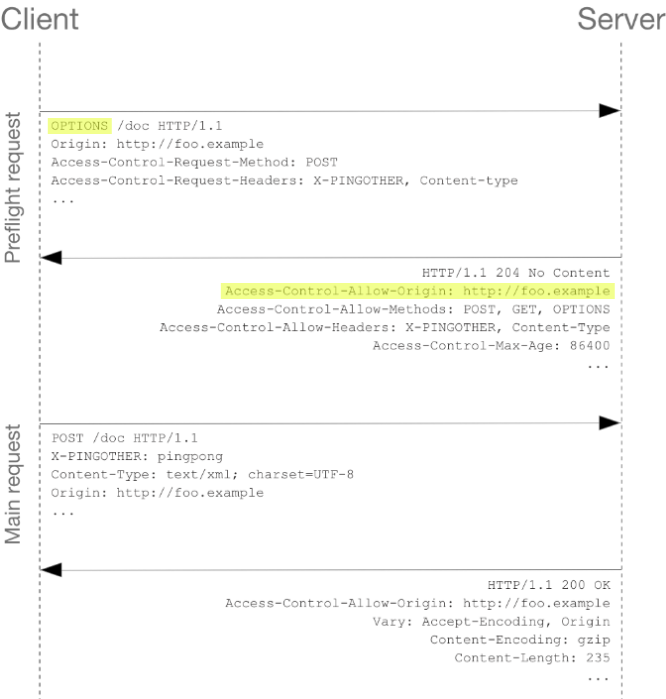CORS
When I started getting into web development, I would sometimes run into this error.

At the time, I had no clue of what it meant even after searching it up and looking at the official MDN page. However, after taking a course that briefly went over networking, I really wanted to be clear of what CORS is, and why I get this error on certain occasions. I hope you also find this helpful and let’s dive in!
What is CORS?
Best place to start with is the abbreviated name. (It is quite surprising to know how much information one can get from just the name) CORS stands for Cross-Origin Resource Sharing.
Based on the name, the cross-origin part sounds something that has to do with different domains (+ protocol, port) and the resource sharing part seems related to the action of requesting information from one to another.
With this in mind, let’s look at the explanation from MDN:
CORS is a mechanism that uses additional HTTP headers to tell browsers to give a web application running at one origin, access to selected resources from a different origin.
The information we extracted from the name fits exactly with the description. However, there is something more we can get from the official explanation.
First, CORS is a mechanism. This is what confused me the most when I first encountered CORS. In my opinion, I think CORS is more like a sub-protocol similar to the HTTP protocol in a sense that it is a promise in the internet (more specifically between browsers and servers). Please correct me if I am wrong. Please.
Second, CORS uses additional HTTP headers to give browsers access to the requested resource. Before we dive into what the additional HTTP headers are, I think it is important to analyze when and how the CORS mechanism works.
When is CORS used?
If you have tried fetching resource before, it would seem that the CORS error shown above only seems to happen under certain situations which is something that really got me confused. However, to sum it up based on MDN, CORS is used when using the
- XMLHttpRequest or fetch API
- Web Fonts
and more according to the source, but I only listed the ones that can be easily encountered.
In addition, when using the XMLHttpRequest or the fetch API, sometimes, you do not get the CORS error message even if CORS is not setup in the target server. This can also be described as the CORS preflight not triggering. This mainly happens as it is a Simple Request. Simple requests are requests that
- use the
GET,HEAD, orPOSTmethod - use headers that are CORS-safelisted
- only has
text/plain,application/x-www-form-urlencoded, ormultipart/form-datain the Content-Type header
There are additional restrictions on what makes a simple request, but I have listed the most popular ones above. In addition, I highly recommend https://httptoolkit.tech/will-it-cors/ for trying it out yourself.
As mentioned above, these simple requests do not trigger the CORS preflight. I would like to explain more about this with the image from MDN.
How does CORS work?

Based on the image from MDN, when requesting a resource that is not a simple request, the client (browser) must first ask whether the server will allow the request.
To “ask” the server, the client sends a request with the OPTION method along with additional CORS related headers.
When the server receives the request, it responds with the CORS related headers that specify the origin, methods, and headers that can be requested from the client.
Once the server allows cross origin access, then the client can send the actual request and proceed with the resource sharing.
Conclusion
This is the overview of CORS and there are more to it such as credentials and more. I highly recommend going through the request and response headers related to CORS.